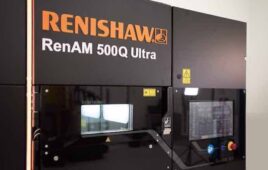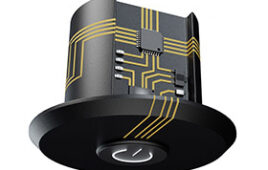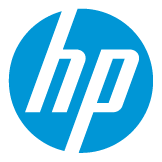The 3MF Consortium added four new member companies on July 1, adding 3D Systems, Materialise, Stratasys, and Siemens PLM Software to the group dedicated to giving 3D printers a common language.
Read more: 3D Printing in Color
The first version of the 3MF specification is free to download, and is designed to bring products from design to object without the user needing to worry about whether different printers and types of software are interoperable.
The Consortium was launched in April 2015 using the .3MF file type, which was donated by Microsoft.
Executive Director and Microsoft Group Program Manager Adrian Lannin spoke to Product Design & Development about the program and its newest members. He said that in the consortium’s inception, he and others reached out to companies that they felt were knowledgeable about the 3D printing industry, including hardware, services, and CAD software. Later, more companies reached out to the group themselves, asking to join.
Lannin said that the inclusion of new members is expected to help both 3MF and companies from all aspects of the 3D printing industry.
“When we bring a new person into the consortium we’re very carefully and very intentionally looking for a particular set of knowledge and expertise. So the new companies that joined, for example Stratasys and 3D Systems in particular, bring decades of experience in printer development,” he said.
Some of that decision-making is driven by a desire for diverse skill sets. “What we look for in a new member is someone who’s going to bring a real technological point of view or knowledge to the consortium. So we think that it’s very important that we’ve got a balance of companies who can provide information and expertise in different areas,” Lannin said.
For the 3D printing consumer, a single specification could prevent lengthy delays in printing due to bugs and an inability to communicate between file types. “That’s exactly the type of problem services face all the time because they’re using file formats that were never designed to support the needs of actual manufacturing,” he said.
With a unified language, one printing service could communicate with a set of different printers without difficulty.
3MF wants to vary the types of companies it works with, from those like Shapeways that provide online printing services to those which provide CAD packages, such as Autodesk.
“Our partnership with Microsoft and the interoperability of the 3MF format will help our customers harness all the key features of our 3D printers from the Windows platform,” said Chuck Hull, chief technology officer and founder, 3D Systems, in a press release. “As the inventors of 3D printing and the widely used STL file format, we’re pleased to join the 3MF Consortium and bring our expertise to help shape the future of interoperability and print integration.”
Similarly, Stratasys Executive Vice President of Business Development, Marketing & Vertical Solutions Dan Yalon said that their partnership with 3MF is a look ahead to the future. “To further accelerate the adoption of 3D printing, it needs to become more accessible. This is why Stratasys is pleased to be joining the 3MF Consortium at this time and contributing to its mission to enable a simplified, more intuitive 3D printing user experience.”
Lannin said that 3MF is already working on new features and an “extended” version that can communicate with more types of printers. Other upcoming changes are based on projects they know are still in the works. Industry insiders communicate with one another to prepare for projects still buried away from the public by non-disclosure clauses.
“We’re very pragmatic,” Lannin said. “We want to do things that we know are going to be used by products. So we don’t do things speculatively. If you see something introduced in 3MF format, it’s because there is a product coming out that will need that.”
As for what Lannin can say about the future of the industry? He predicts greater reliability, something that 3D printing will need to have in order to fully take root in both manufacturing and artistic sectors. Companies are doing a good job of eliminating points of failure in the industry now, he said, but are not yet at the future he describes.
“Then we’ll start unleashing the creativity of people who are able to use 3D printing and additive manufacturing not as the enthusiasts or specialists they are today, but people who can take advantage of the fact that there’s a technology out there and use their skills and produce designs that are maybe not possible today.”
He described the coming change as the difference between creating a website 15 or 20 years ago and creating one today. Designers may also increasingly take inspiration from nature, and, Lannin said, “They’re going to think about a solid object from the inside out.”
“The technology and the hardware is so far ahead of what we can do with software,” he said. “Right now we’re just trying to catch up to that tech and unleash the potential creativity [to which] 3D hardware gives us access.”
In total, there are 11 members of the 3MF consortium: 3D Systems, Autodesk, Inc, Dassault Systèmes, FIT AG/netfabb GmbH, HP, Materialise, Microsoft, Shapeways, Siemens PLM Software, SLM Solutions Group AG, and Stratasys.
Filed Under: 3D printing • additive • stereolithography, Rapid prototyping




